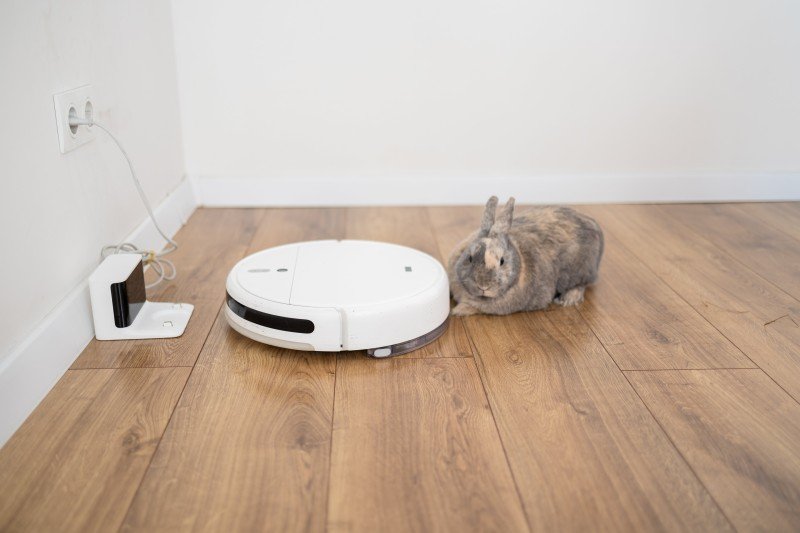The Rise of Robotic Vacuums: A Comprehensive Guide
In the fast-paced world of technological developments, the integration of robotics into everyday household chores has revolutionized the way people keep their homes. Among the most popular and useful innovations is the robotic vacuum cleaner, a gadget designed to autonomously clean floorings, reducing the requirement for manual labor. This article explores the development, performance, advantages, and future of robotic vacuums, offering a detailed guide for those considering including one to their home.
The Evolution of Robotic Vacuums
The principle of a robotic vacuum cleaner dates back to the late 20th century, but it wasn't until the early 2000s that these gadgets ended up being commercially viable. The very first extensively acknowledged robotic vacuum, the iRobot Roomba, was introduced in 2002. Ever since, the innovation has advanced considerably, with modern-day designs featuring advanced navigation systems, effective suction, and smart home combination.
Secret Milestones:
- 2002: Introduction of the iRobot Roomba - The first commercially successful robotic vacuum.
- 2005: Advanced Navigation - Integration of infrared sensing units and cliff detection to prevent falls.
- 2010: Wi-Fi Connectivity - Allowing push-button control and scheduling by means of mobile phone apps.
- 2015: Mapping and Zoning - Advanced mapping technology for more efficient cleaning.
- 2020: AI and Machine Learning - Enhanced navigation and cleaning patterns through artificial intelligence.
How Robotic Vacuums Work
Robotic vacuums run using a combination of sensors, algorithms, and motors. Here's a breakdown of the essential elements and procedures:
- Sensors: These include infrared, ultrasonic, and optical sensors that help the vacuum spot barriers, edges, and dirt. read full article use cameras for visual mapping.
- Mapping and Navigation: Advanced designs use SLAM (Simultaneous Localization and Mapping) technology to develop a map of the cleaning location and browse effectively.
- Suction and Brushes: Robotic vacuums use powerful motors to create suction and various brushes to get dirt and debris. Some models include side brushes to reach into corners.
- Battery and Charging: Most robotic vacuums are geared up with rechargeable lithium-ion batteries. They go back to their charging dock when the battery is low.
- Smart Home Integration: Many designs can be managed via smartphone apps, voice assistants like Amazon Alexa or Google Assistant, and can be incorporated into smart home systems.
Benefits of Robotic Vacuums
- Convenience: One of the most substantial advantages is the benefit of hands-free cleaning. Users can arrange cleansings or begin them remotely, enabling a tidy home without the effort.
- Effectiveness: Modern robotic vacuums are created to clean efficiently, covering big locations and browsing around barriers with ease.
- Long-Term Savings: While the initial expense might be greater, the long-term savings on manual cleaning tools and the time conserved can be substantial.
- Allergic reaction Relief: Regular cleaning can help in reducing irritants in the home, making it a useful investment for allergic reaction patients.
- Eco-Friendly: Many designs are energy-efficient and utilize recyclable materials, making them a more sustainable cleaning alternative.
Popular Models and Features
iRobot Roomba i7+
- Features: Advanced mapping, automatic dirt disposal, Wi-Fi connection, and voice control.
- Price Range: ₤ 600 - ₤ 1,000
Dyson 360 Heurist
- Features: 360-degree video camera for mapping, effective suction, and HEPA filtration.
- Rate Range: ₤ 600 - ₤ 800
Ecovacs Deebot Ozmo T8
- Functions: TrueMapping navigation, mopping capabilities, and voice control.
- Cost Range: ₤ 500 - ₤ 700
Neato D7
- Features: Laser navigation, big cleaning location, and app control.
- Cost Range: ₤ 500 - ₤ 700
Future Trends in Robotic Vacuums
The future of robotic vacuums is appealing, with ongoing developments in technology. Some trends to expect include:
- Enhanced AI and Machine Learning: More innovative algorithms will make it possible for better navigation, challenge avoidance, and cleaning effectiveness.
- Integration with Smart Home Ecosystems: Increased compatibility with numerous smart home gadgets and platforms.
- Enhanced Battery Life: Longer-lasting batteries to cover larger areas without requiring to recharge.
- Multi-Functionality: Beyond vacuuming, future designs might consist of extra functions like air purification and surface area cleaning.
FAQs
Q: Are robotic vacuums as efficient as standard vacuums?A: While they might not be as effective as high-end standard vacuums, modern-day robotic vacuums are extremely effective for regular cleaning jobs. They are especially helpful for maintaining a tidy home between deep cleans.
Q: How often should I clean up the filters and brushes?A: It is recommended to clean up the filters and brushes after every couple of uses to guarantee optimal performance. Seek advice from the user manual for particular maintenance guidelines.
Q: Can robotic vacuums navigate stairs?A: Most robotic vacuums are geared up with cliff sensing units that avoid them from dropping stairs. Nevertheless, they are not created to tidy stairs.
Q: Are robotic vacuums noisy?A: Generally, robotic vacuums are quieter than traditional vacuums. However, sound levels can vary by model. Some models offer quiet cleaning modes for nighttime use.
Q: Can I use a robotic vacuum with pets?A: Yes, lots of robotic vacuums are designed to handle pet hair and dander. Look for models with strong suction and specialized pet cleaning features.
Robotic vacuums have actually come a long method because their creation, offering a practical, effective, and environmentally friendly service to home cleaning. With continuous advancements in technology, these devices are becoming more sophisticated and user-friendly. Whether you're aiming to save time, minimize irritants, or simply enjoy a cleaner home, a robotic vacuum is a rewarding investment. By understanding the features, benefits, and future patterns, you can make a notified decision to enhance your home cleaning experience.

